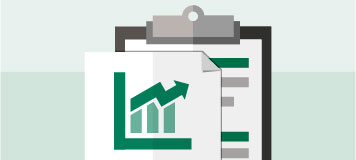Q. What is a guideline?
A. Guidelines are summaries of what we know about different tests and treatments for health problems with actionable practice recommendations based on systematic reviews of evidence. Learn more general information on guidelines and how other organizations can get involved.
Q. What is a measure?
A. Quality measures are math equations to help understand how often health care services are consistent with current medical knowledge. Guideline recommendations form the denominator and numerator statements of quality measures assessing provider or system processes. Measures may also directly assess patient outcomes such as adverse events or comorbidities. Learn more about how measures are developed.
Q. How do measures differ from guidelines?
A. Quality measures are math equations to help understand how often health care services are consistent with current medical knowledge. Clinical Practice Guidelines are documents that include recommendations intended to optimize patient care that are based on an evidence-based systematic review. Guideline recommendations form the denominator and numerator statements of quality measures.
Q. What type of documents are posted for public comment?
A. Guideline drafts and protocols (planning documents for guidelines) are posted here. A protocol does not have conclusion or recommendation statements. Measure specifications, including numerator, denominator, exclusions, and relevant CPT and ICD codes are also posted for public comment.
Q. Why do you have a public comment period? Who should review and comment on the drafts?
A. The public comment period is held to ensure draft products meet neurology needs. Comments are reviewed and guidelines & measures edited in response to feedback received. The AAN is looking for feedback from all stakeholders, including neurologists, other health care providers, patients, caregivers, family members, advocates, and researchers. Anyone can comment during the public comment period.
Q. How long is the public comment period?
A. Guidelines are available for 30 days and measures are available for 21 days.
Q. The guideline has a full document and a public summary document. Which one should I review?
A. The intended audience of the full guideline or protocol document is clinicians, whereas the intended audience of the public summary is patients, caregivers, and patient advocates. You may review both documents, but do not need to do so.
Q. Why are there so many measures in a set, and do I have to do them all?
A. The measurement sets include multiple measures with strong evidence or guideline statements supporting best practices and known treatment gaps. Multiple measures are created to give providers options on areas to focus their quality improvement efforts. Providers are encouraged to pick 1-2 measures most meaningful to their patient populations and start measuring there. This measure data can form a benchmark and be used to drive quality improvement in practice. There is no mandate to gather data for all measures.
Q. What am I looking for when I review a protocol or guideline?
A. For protocols, commenters should review to make sure the plan includes questions that are appropriate and relevant to stakeholders. For guidelines, commenters should review to make sure the guideline includes relevant information and diverse perspectives.
Q. Am I required to use quality measures as part of my patient visit?
A. There is no requirement, but for individual providers participating in CMS' Merit-based Incentive Payment System (MIPS) there is a required quality component. As part of MIPS' program requirements, eligible providers must submit quality measure data to satisfy reporting requirements to be eligible for an incentive (bonus) payment.
Q. Will these measures be used by CMS for MIPS?
A. Select measures may be submitted for use in accountability programs like CMS’ MIPS only if they have been tested following approvals. These measures will be edited in response to comments. The measures will then be approved by AAN committees and released to the public. Testing may occur after they are released.
Q. I have more questions, who can I contact?
A. If you have any questions or technical issues, please email guidelines@aan.com or quality@aan.com.

